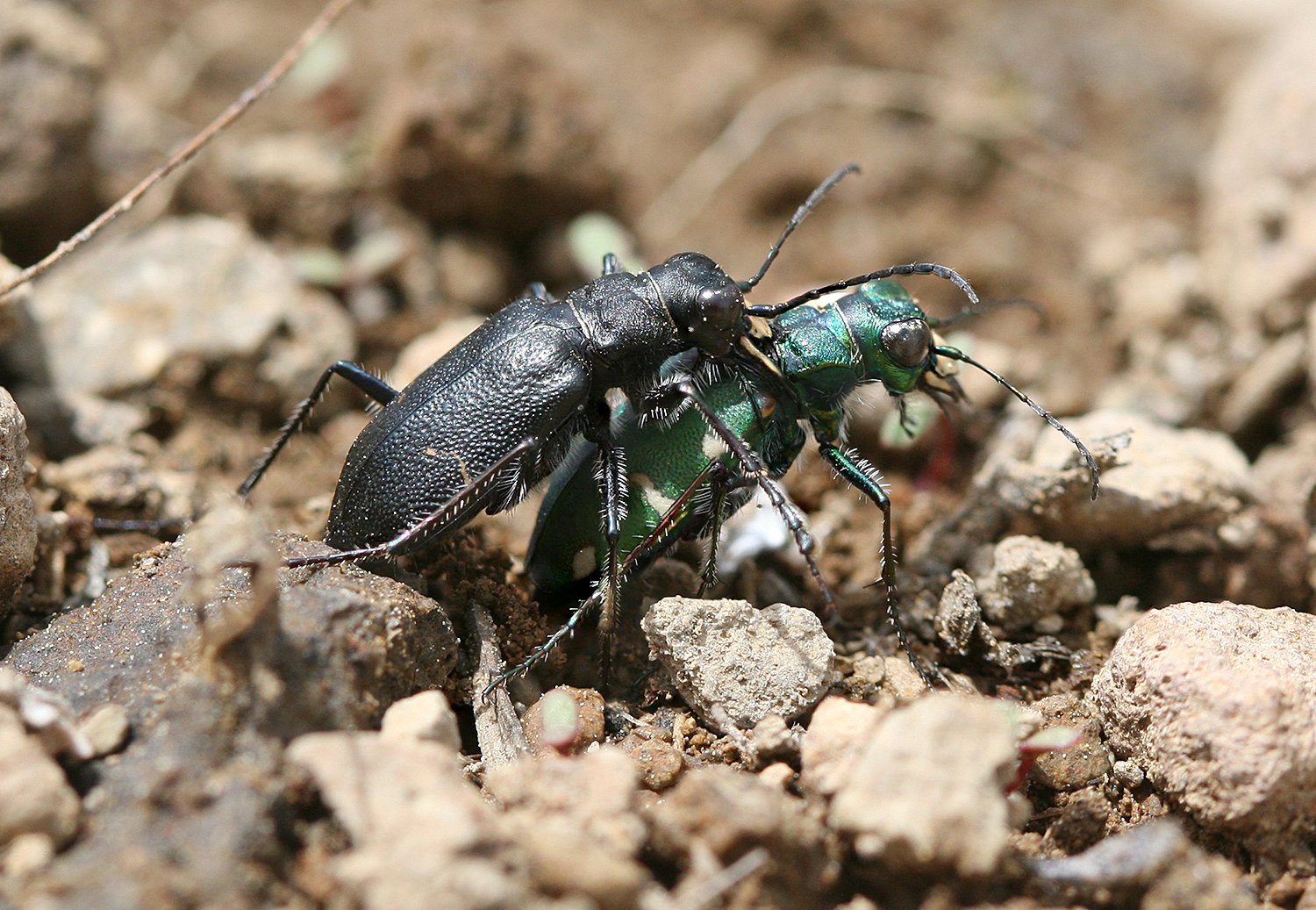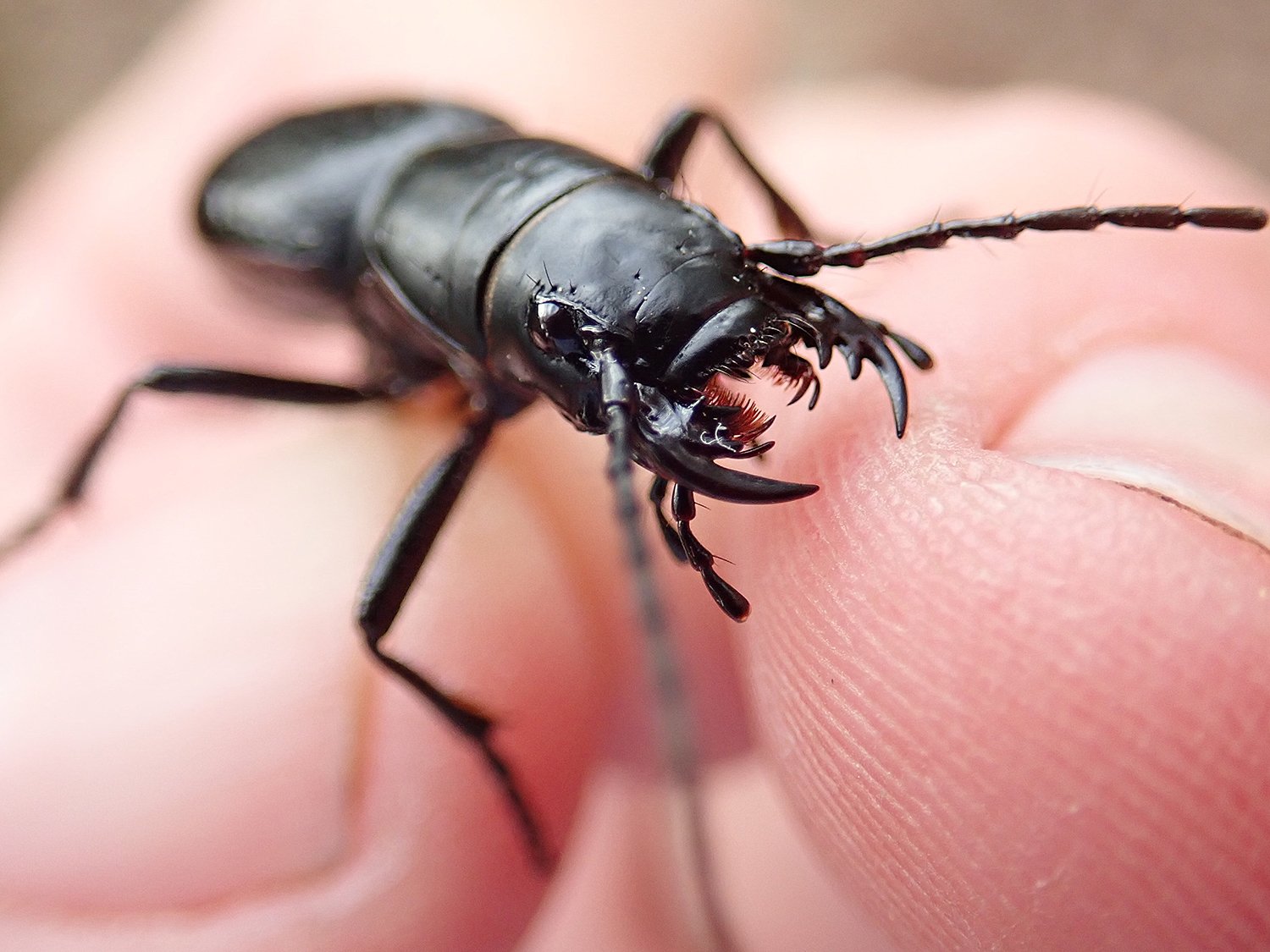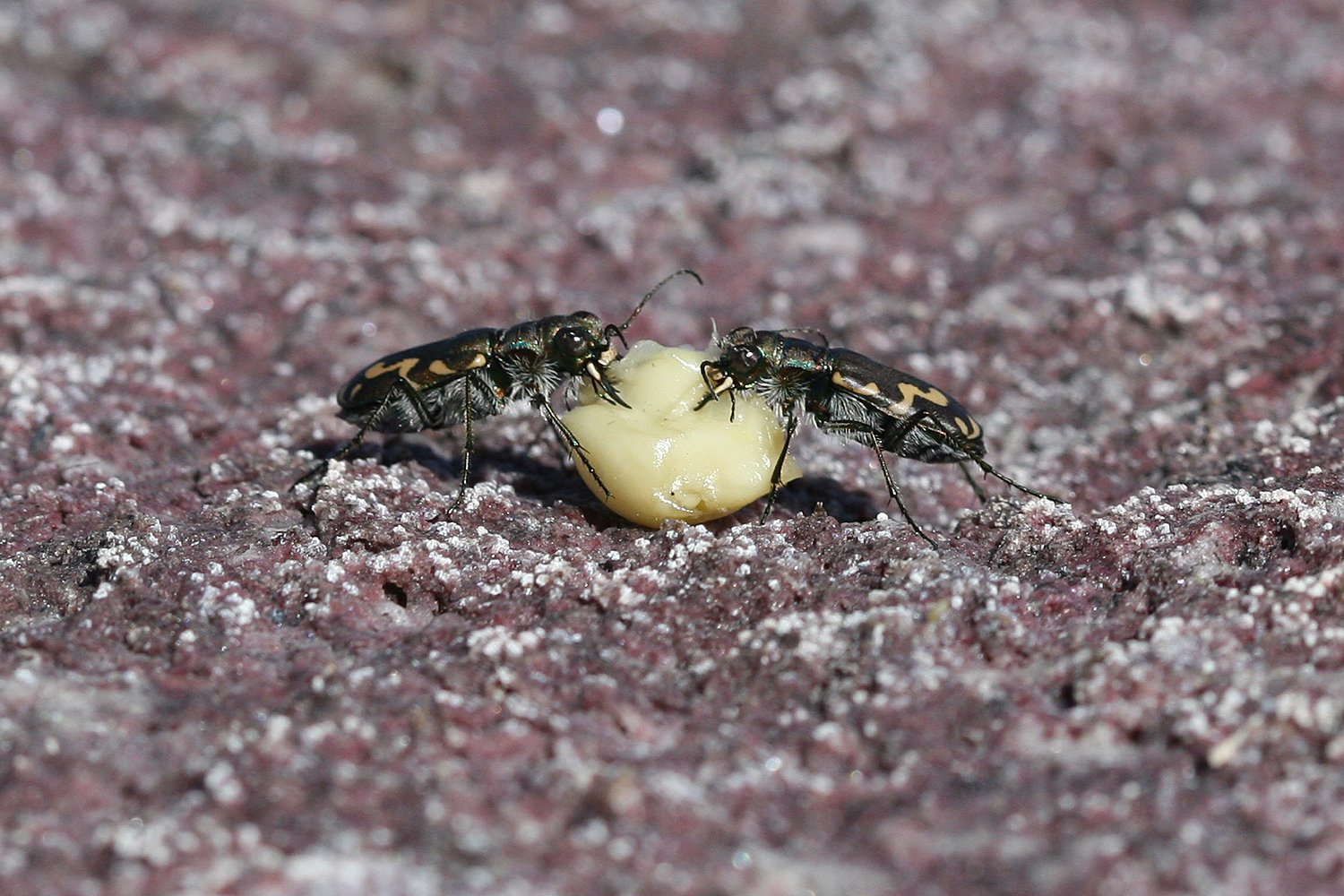
Tiger Beetles
Tiger beetles are a charismatic and well-studied family within the Coleoptera. As a group they can be found in a large variety of habitats, but individual species exhibit strong microhabitat preferences, disturbance tolerances, and differences in seasonal activity as adults. Due to these specialization factors, tiger beetles have become an important taxon for conservation planning in some environments (Cassola and Pearson 2000) and a flagship for insect conservation (Knisley and Gwiazdowski 2021).
Our deep interest in this taxon began by developing a study with a Tahoe-Baikal Institute alumnus, Igor Moroldoev, investigating the invertebrate impacts of Tahoe Yellow Cress exclosures on Tahoe beaches. We learned a great deal during those few weeks of Igor’s stay, and we proved that Tahoe Yellow Cress was acting as an umbrella species for invertebrates at Tahoe (Richardson and Moroldoev, 2018).
Omus is generally considered the most poorly studied tiger beetle genus in North America (Pearson et al. 2015), likely due to both their nocturnal activity pattern and cryptic and confounding taxonomy. The genus typically is described as being restricted to the western slopes of the Cascade-Sierran axis, but our work has found the species to occur east of the Sierra Crest as well, extending in the very edge of Nevada (Richardson 2021). As the genus has been a taxonomic disaster for over a century, we are currently working with a group of taxonomists from California, Oregon, and Northern Arizona University to finally sort out species and subspecies descriptions and ranges.
We also have been conducting ongoing investigations of granivory and other behaviors in tiger beetles, as well as studies of their extremely enigmatic distributions, both temporal and spatial, range expansions (Richardson and Johnson 2019), and general population monitoring for certain species.
REFERENCES:
Cassola, F., and D. L. Pearson. 2000. Global patterns of tiger beetle species richness (Coleoptera: Cicindelidae): their use in conservation planning. Biological Conservation 95:197–208.
Kinsley, C. B., and R. Gwiazdowski. 2021. Conservation strategies for protecting tiger beetles and their habitats in the United States: studies with listed species (Coleoptera: Carabidae: Cicindelidae). Annals of the Entomological Society of America 114(3):293-301.
Pearson, D. L., C. B., Knisley, D. P. Duran, and C. J. Kazilek. 2015. A Field Guide to the Tiger Beetles of the United States and Canada: Identification, Natural History, and Distribution of the Cicindelinae, 2nd Ed. Oxford University Press, New York, NY. 251 pp.
Richardson, T. W. 2021. Omus Eschsholtz (1829) in the state of Nevada. Cicindela 53(2):25-36.
Tahoe Yellow Cress, Rorippa subumbellata, an endangered mustard that only grows along the beaches and tributaries of Lake Tahoe.
Omus californicus edwardsii from the Tahoe region occur in a diversity of mesic habitats but are largely restricted to volcanic soils
Senile Tiger Beetles (Cicindela senilis) eating a corn kernel
The montane form of Parvindela lunalonga, once thought to be extinct, is currently known to persist in only one meadow in Lassen County.




